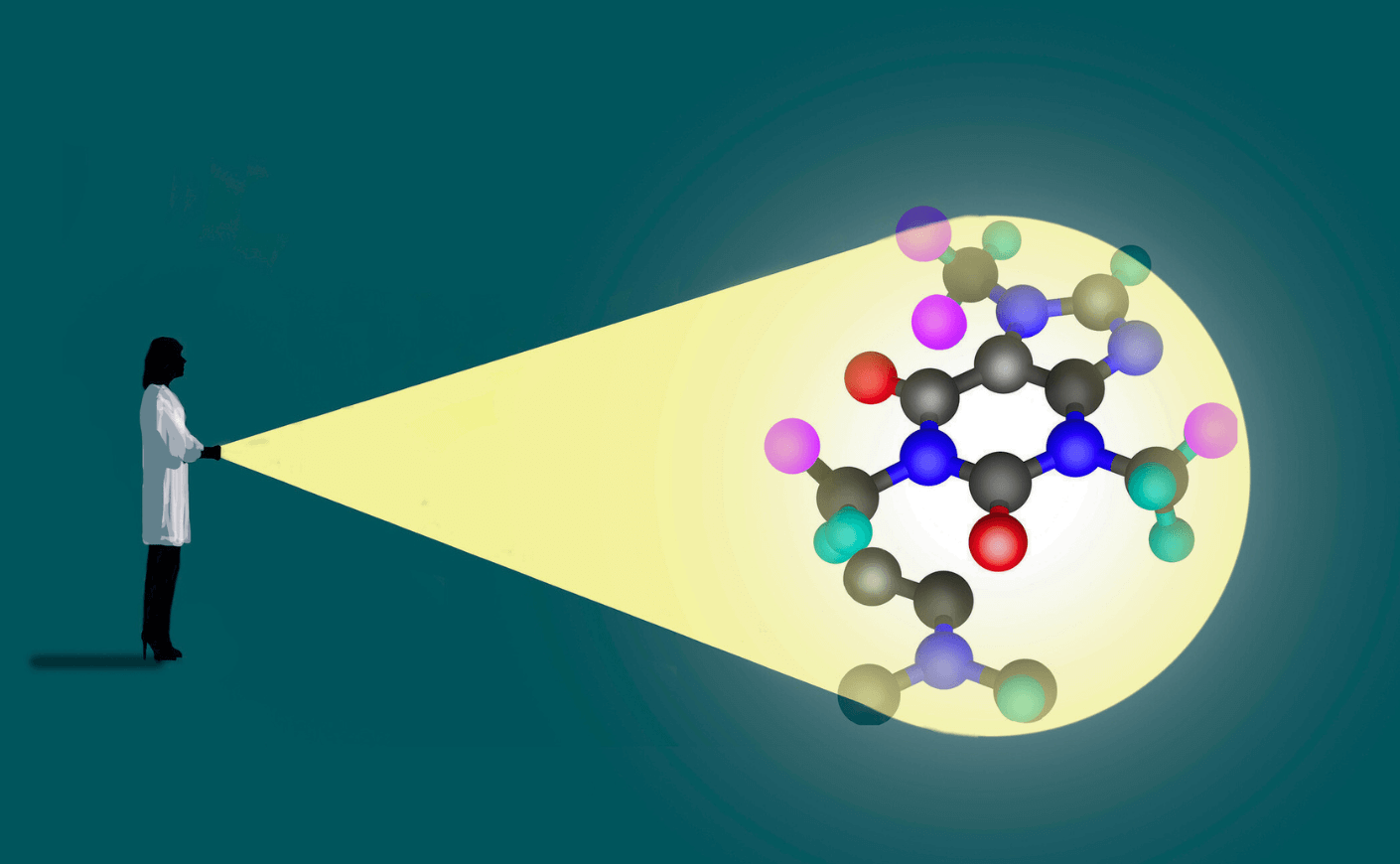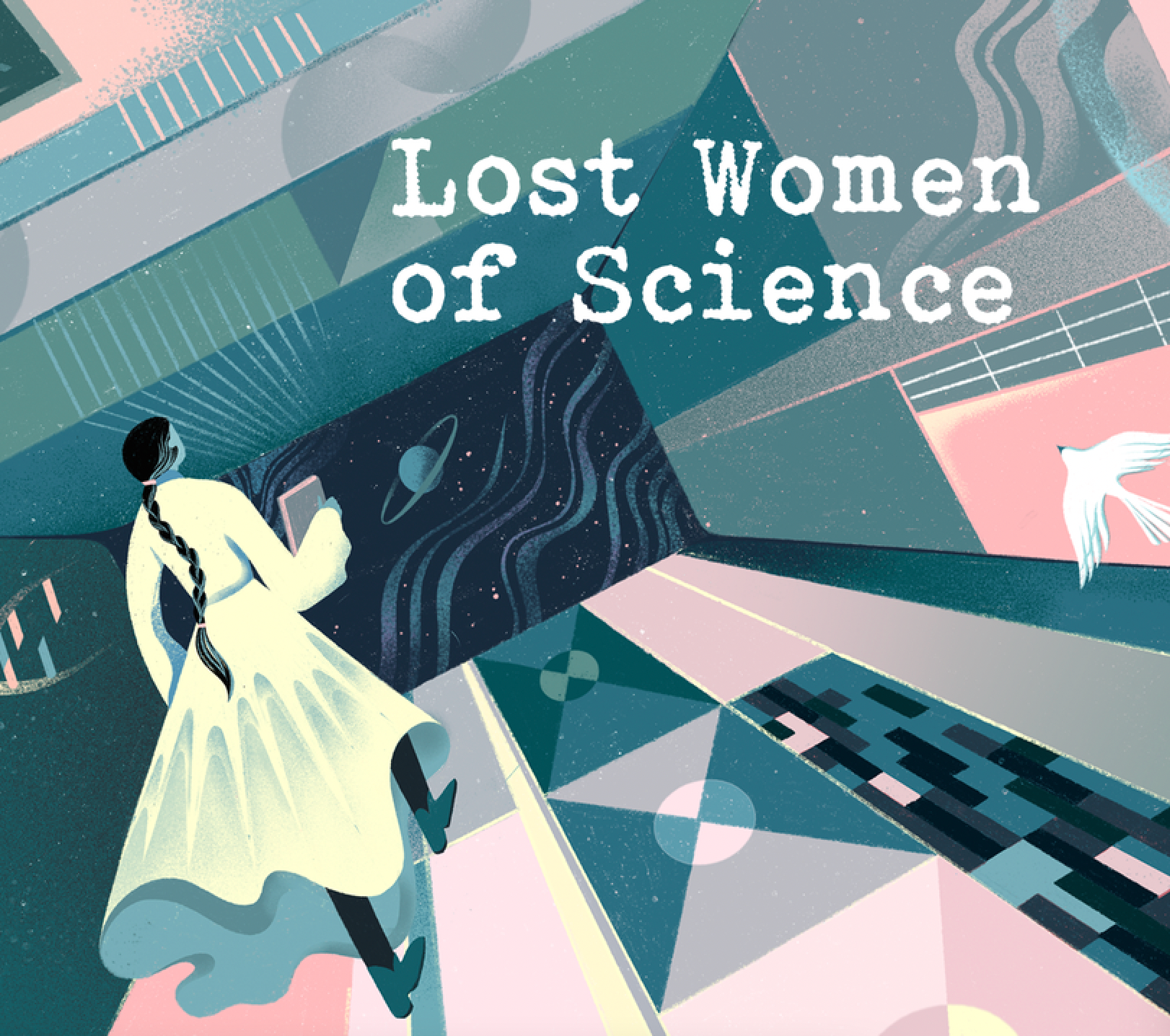Uncovering the hidden legacies of groundbreaking female scientists didn't used to be on Amy Scharf's agenda. But, 10 years ago, Scharf — a bioethicist and clinical ethics consultant at Memorial Sloan Kettering Cancer Center in NYC — had a revelatory conversation with the mother of a close friend. The mother shared an emotional account of her mentor at Columbia Presbyterian Hospital, an extraordinary woman who'd guided her career while she was a struggling immigrant. This mentor also made a monumental discovery: cystic fibrosis. Scharf was floored.
“I stopped her and said, ‘Can you repeat that?’” says Scharf. Turns out, the woman’s mentor was Dorothy Andersen, a pathologist in the 1930s. Andersen — through conducting autopsies on children who'd died from what had been misdiagnosed as malnourishment or celiac disease — identified and named the new disease, cystic fibrosis. Andersen's trailblazing efforts paved the way for diagnostic tools and treatments that have significantly extended the lives of those with the disease. “If we fast-forward to today, thanks to advances in gene editing and gene therapy, people with cystic fibrosis can live much longer lives than once thought possible,” says Scharf.
So why wasn’t Dorothy Andersen’s story taught in schools, alongside that of Marie Curie and Rosalind Franklin? That question lit the spark for something bigger. Scharf reached out to her longtime friend Katie Hafner, a veteran New York Times journalist, and the two found themselves drawn to a mission: To reshape how we view the forgotten women of science.
Scharf's and Hafner's initial attempts to uncover more details about Andersen’s life were met with scant archival material, so they decided to create a podcast to bring her legacy to light. As they dove deeper, the two women realized Andersen’s story was just one of many; countless women scientists had made profound contributions yet remained largely unrecognized or celebrated.
Determined to put a face to these hidden figures, they founded the Lost Women of Science Initiative and continued working on new podcast episodes. Their goal? To not only resurrect Andersen’s story, but to celebrate the achievements of other overlooked female scientists.
Through this initiative, they hope to honor these pioneering women and inspire the next generation of girls and women to thrive in STEM fields. We asked the duo how they choose which incredible pioneers to feature, why women's contributions are so often erased, and what future trailblazers can learn from these groundbreaking scientists.
Katie Couric Media: How do you select the women whose stories you tell on your podcast?
Amy Scharf: To date, we’ve only told the stories of women who have died. We want to give them their recognition and their moment in the sun, and we hope the women who are alive and still working in STEM will someday get the recognition that they deserve.
Katie Hafner: The women who are alive can still advocate for themselves, but the women who are dead cannot. We have a database of well over 300 names and receive numerous tips from people urging us to look into various women. We even have an emergency phone tip line to help us manage these leads. One major tragedy is that many of these women didn’t believe their lives or work mattered. Dorothy Andersen is a prime example. Her papers amount to just one tiny folder in Columbia University’s archives. Fortunately, we decided to push through, and we managed to find a partially written biography of her in a basement in Connecticut — a typed manuscript. This provided valuable information, as it included interviews with people who knew Dorothy.
Sometimes we’re surprised by what we find. For example, during our season on Klára Dán von Neumann, who was married to the famous computer scientist and mathematician John von Neumann, we discovered that all of her papers, which was quite infuriating, were not filed under her name, but under his name at the Library of Congress. So we had to look for these Klára "needles" in the proverbial John von Neumann haystack to piece her story together. That's why one of our mantras at Lost Women of Science is, "We're not mad, we're curious. OK, we're a little mad.”
In your view, why are so many contributions by women in science neglected or erased?
Katie: Women didn't get the right to vote until 100 years ago, and they were seen as having different roles in society. Until very recently, if there was a scientific couple, they could not work at the same institution. Invariably, it was the woman who had to go back home, raise the kids, or find some other job. This went on until very recently. We've had episodes about women dressing as men, or using just their initials to submit papers, get jobs, and gain admission to universities. Dorothy wanted to be a surgeon, but surgery was closed off to her.
Amy: We featured another scientist on our podcast who applied for a Ph.D. program using her first initial. Once she got in, she had pangs of conscience and felt she had to tell them she was a woman. When she did, they initially rescinded her acceptance. Eventually, they let her in, but their initial reaction was to reject her. Female scientists couldn’t get published or find jobs, so many of them worked with their male family members — husbands, brothers, fathers — and their male family member got the credit.
Have you identified any recurring themes or patterns in the stories of the women you've highlighted so far?
Amy: All the women we've featured exhibit one key trait: perseverance. They did not take crap, or maybe just a little, but no matter what obstacles they faced, they kept going. Some of these women had families who were former slaves, and the odds against them were incredibly high. The disdain from the male scientific community was pervasive, but these women practiced science despite it. They put their heads down, did their jobs, and loved science too much to let anyone stop them.
Katie: They were so curious about the world around them. That's another pattern we've seen.
As you prepare to showcase these stories in a series of books for middle school students, how do you believe the historical underrepresentation of female scientists impacts young students considering STEM careers?
Katie: Hugely. Kids are that way — unless they can see themselves in a role, they don't consider it. It takes a very unusual child to step out of that.
Amy: Exactly. I was just rereading one of the chapters on one of our scientists, Yvonne Young Clarke, who was the chair of the mechanical engineering department at Tennessee Tech, a historically black college outside Nashville. In her many decades as chair, she increased the representation of women in the mechanical engineering department from low single digits to up to 25 percent of her students. That speaks volumes. If you see someone who is a force of nature and a leader in that role, someone who you can relate to, you have greater confidence to put yourself out there. But if you don't see someone like that, it's going to stay in those low digits.
What feedback have you received from your podcast audience regarding its impact?
Katie: What's interesting is that we have a lot of fathers listen to the podcast and say, "I cried. This is what my daughter wants to do. Listening to your podcast has emboldened her. Thank you."
When you launched this initiative, were there similar projects already underway? If not, why do you think that might be?
Amy: We did a lot of research to see what else was out there. There are several podcasts and books that focus on prominent women, including women in science, but they mostly cover living women — those in academia, business, or science fields. Some podcasts talk about famous women in history, including a few scientists, but these weren't very in-depth. We aimed to create something different by dedicating four to six episodes, each about 30 minutes long, to telling each scientist's story. This requires a lot of research and time — four to six months for each story. There weren’t any other podcasts going that deep into the lives of scientists, or the science itself.
It takes a lot of time and perseverance to produce a quality product. When you're under pressure to release an episode every two to three weeks, it's really challenging unless you have an army working on it. We were like the Little Engine That Could, and we did.
How has working on this project shaped your perspectives on science and gender?
Katie: One of the episodes is about my own grandmother, a brilliant biologist who investigated a blindness epidemic in the 1940s. But as a little girl, the grandparent whose science mattered was my grandfather's. He was a well-known atomic physicist at MIT. It never occurred to me that my grandmother was doing important work, too, because she never talked about it. She spoke more about everyday things, like our figures, our hair, and her dogs. This experience has influenced me as a mother. Even though I'm not a scientist, I never thought my own daughter couldn't be one. She is now a doctor. And it isn’t that I pushed her, I just supported her. She initially focused on religious studies and even considered becoming a rabbi, but she was eventually drawn to medicine. I must have given her clear signs that I didn’t want her to give up.
What advice would you offer to young girls considering a career in STEM?
Amy: I'd say, "Persevere." It's not easy, but it is so rewarding. The other advice I would give is to try to find a mentor. It doesn't have to be a woman, but find a mentor. And of course, be curious and don't be afraid to ask questions.
Get ready for an electrifying new season of Lost Women of Science, premiering on September 12. This five-part series will spotlight the remarkable Dr. Frances Oldham Kelsey, a pioneering FDA medical reviewer in the early 1960s. Dr. Kelsey played a crucial role in preventing the approval of thalidomide as a morning sickness remedy after it was revealed that the drug was causing severe birth defects in thousands of babies across Europe. Be sure to tune in wherever you listen to your podcasts.










